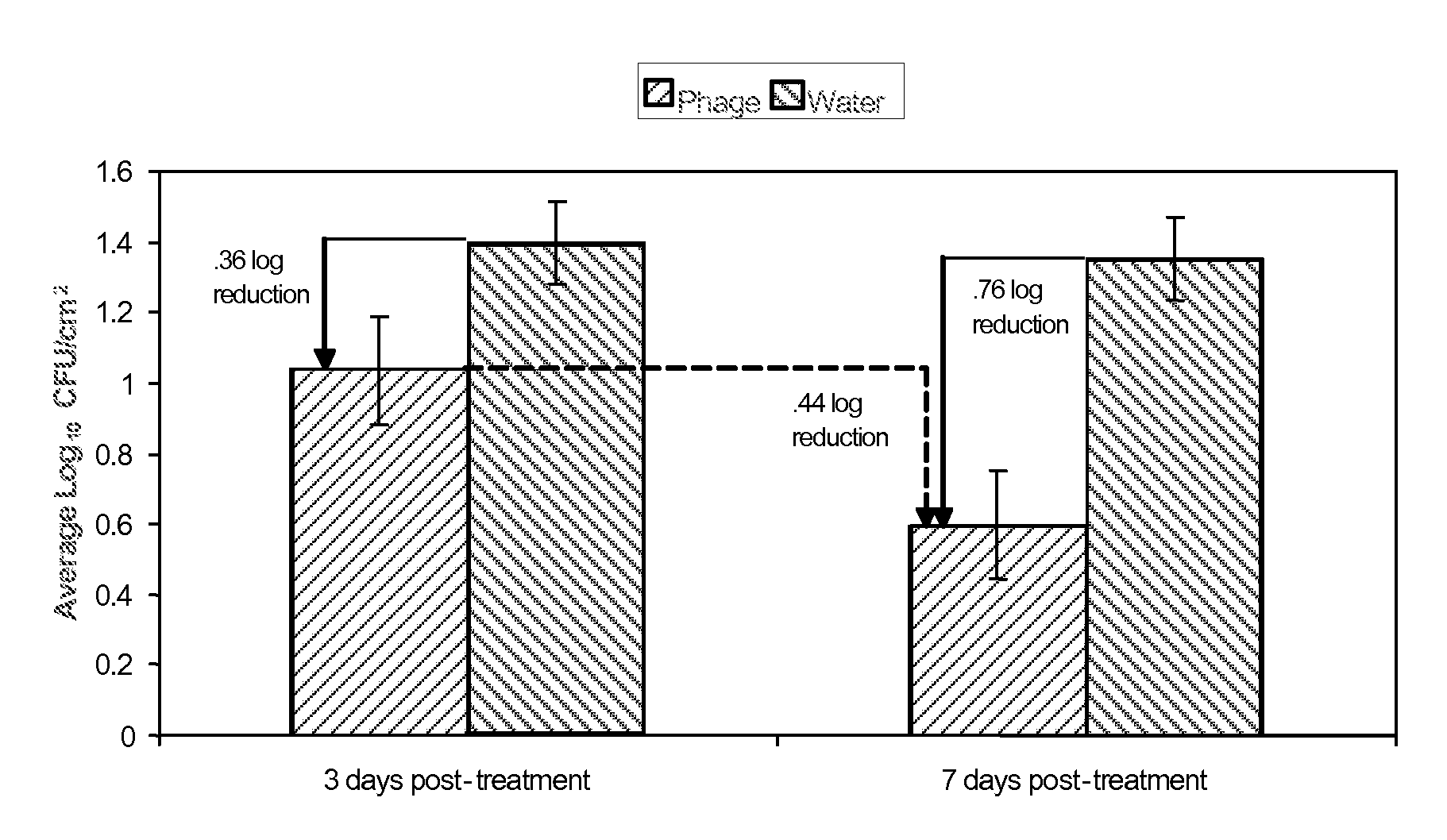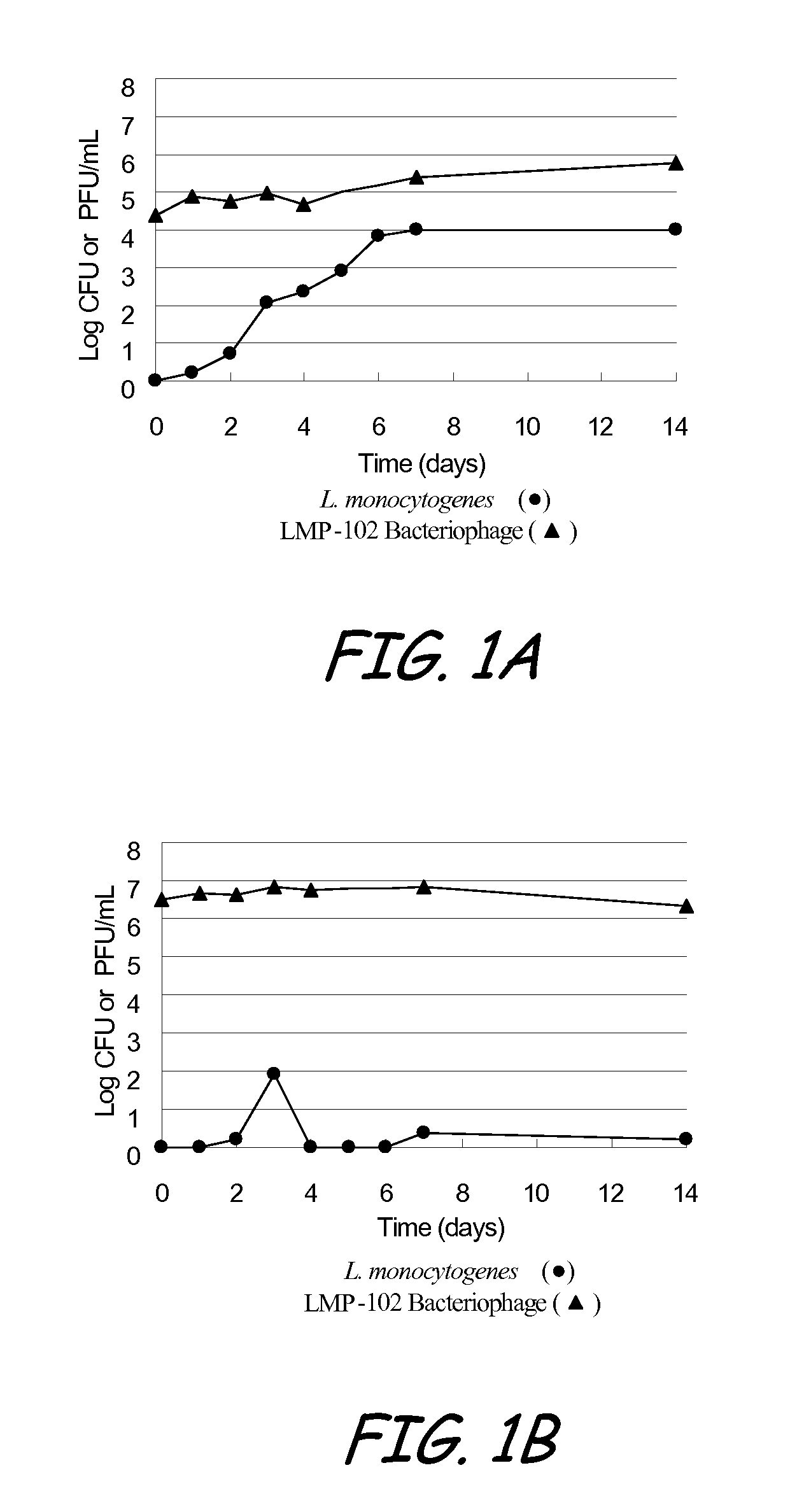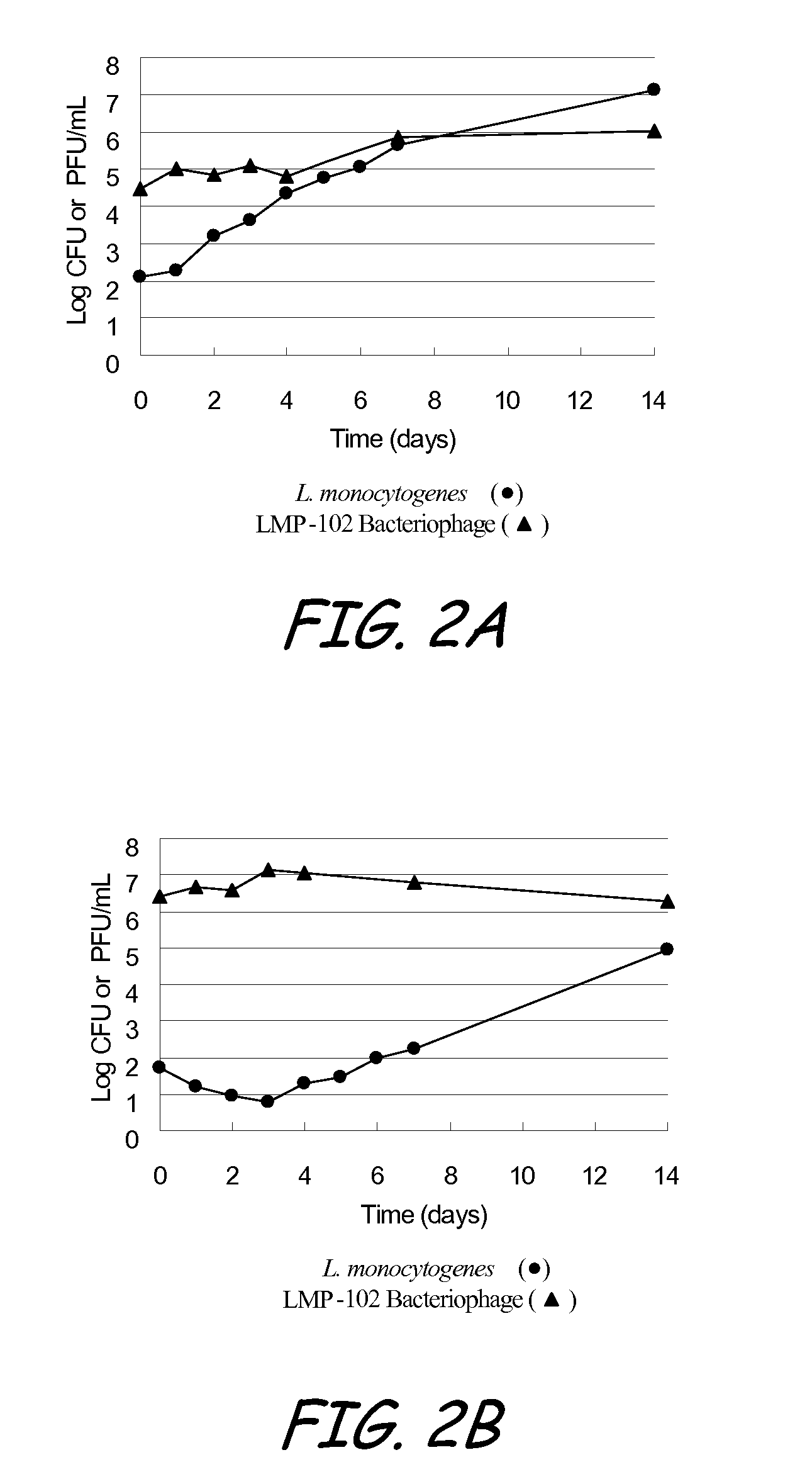Bacteriophage treatment for reducing and preventing bacterial contamination
- Summary
- Abstract
- Description
- Claims
- Application Information
AI Technical Summary
Benefits of technology
Problems solved by technology
Method used
Image
Examples
example 1
[0100]The purpose of the test study defined as Example 1 was to evaluate the stability of LMP-102™ bacteriophage in hot dog broth, and to determine a dosage of LMP-102™, relative to L. monocytogenes, that is effective at suppressing the growth of L. monocytogenes in the hot dog broth. (Plaque Forming Units (PFU) of LMP-102™ were measured and compared to Colony Forming Units (CFU) of L. monocytogenes.) The test conditions in Example 1 were intended to provide optimal conditions for the survivability of the bacteriophage and optimal conditions for reducing L. monocytogenes.
[0101]Five strains of L. monocytogenes, including Lis-300 (Serotype 1 / 2c), Lis-301 (Serotype 1 / 2a), and Lis-302 (Serotype 4b) (field isolates), Lis-253 (ATCC 35152, Serotype 1 / 2b), and Lis-254 (ATCC 13932, Serotype 4b), were used. The strains were maintained on Brain Heart Infusion Agar slants at 4±1° C.
[0102]Each strain was grown separately in 10 ml 2% (wt / vol) hot dog broth (HDB) for 24 h at 37° C. At least three...
example 2
[0112]The purpose of the test study in Example 2 was to determine the activity and stability of LMP-102™ bacteriophage on the surface of frankfurters and sliced roast beef stored in vacuum packages at 5±2° C. for up to 14 days. Samples were prepared with LMP-102™ in the presence and in the absence of L. monocytogenes.
[0113]LMP-102™, a mixture of six monophages which target Listeria monocytogenes, was produced by Intralytix, Inc., at the Warehouse at Camden Yards, 323 West Camden Street, Suite 675, Baltimore, Md., 21201. LMP-102™ was diluted appropriately in sterile deionized water to obtain a use-solution containing approximately 1×108 plaque forming units (PFU) / ml. The titer of LMP-102™ prior to dilution was estimated to be 3.0×109 PFU / ml.
[0114]The test system was L. monocytogenes ATCC 19115 (serogroup 4b) and was obtained from the American Type Culture Collection. The identification of L. monocytogenes ATCC 19115 was confirmed using a selective growth medium and Gram stain reacti...
example 3
[0127]The objective of the test study defined as Example 3 was to determine the extended antilisterial activity of a LMP-102™ bacteriophage treatment applied to sliced roast beef and frankfurters. More specifically, the objective was to determine if the bacteriophage is able to prevent the growth of L. monocytogenes introduced to the roast beef and frankfurters some time after the bacteriophage treatment was applied.
[0128]LMP-102™, a mixture of six monophages which target Listeria monocytogenes, was produced by Intralytix, Inc., at the Warehouse at Camden Yards, 323 West Camden Street, Suite 675, Baltimore, Md., 21201. LMP-102™ was diluted to approximately 9±0.5 log10 PFU / ml.
[0129]The test system was L. monocytogenes ATCC 19115 (serogroup 4b). A tube of Brian Heat Infusion (BHI) broth was inoculated with the test system, followed by incubation at 37±2° C. for 24±4 hours. The strain was then propagated in 10 ml of BHI broth and then incubated at 37±2° C. for 24±4 hours, followed by a...
PUM
 Login to View More
Login to View More Abstract
Description
Claims
Application Information
 Login to View More
Login to View More - R&D
- Intellectual Property
- Life Sciences
- Materials
- Tech Scout
- Unparalleled Data Quality
- Higher Quality Content
- 60% Fewer Hallucinations
Browse by: Latest US Patents, China's latest patents, Technical Efficacy Thesaurus, Application Domain, Technology Topic, Popular Technical Reports.
© 2025 PatSnap. All rights reserved.Legal|Privacy policy|Modern Slavery Act Transparency Statement|Sitemap|About US| Contact US: help@patsnap.com



